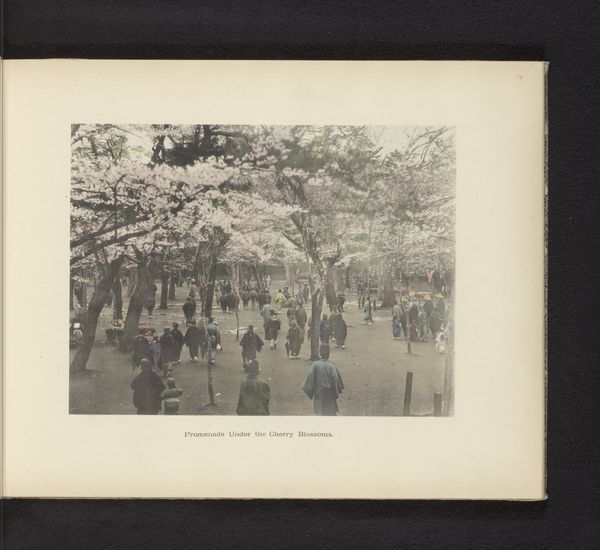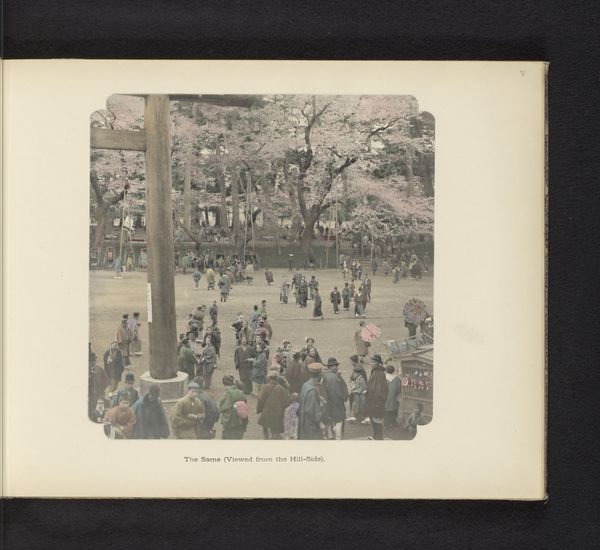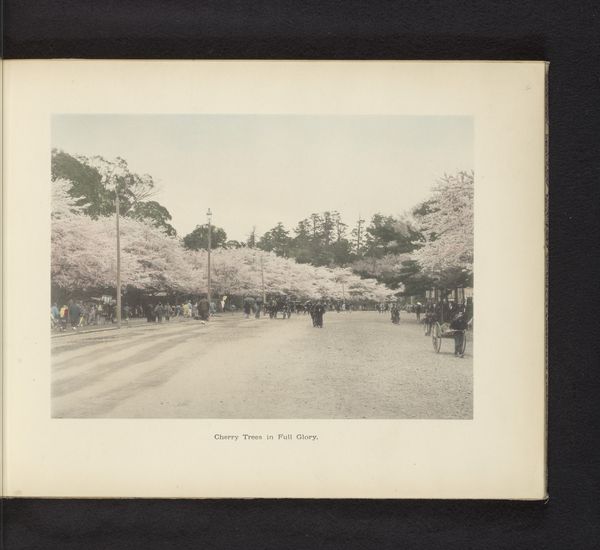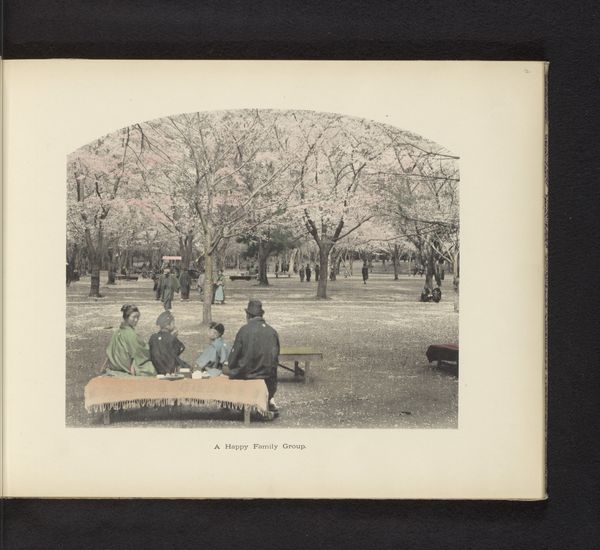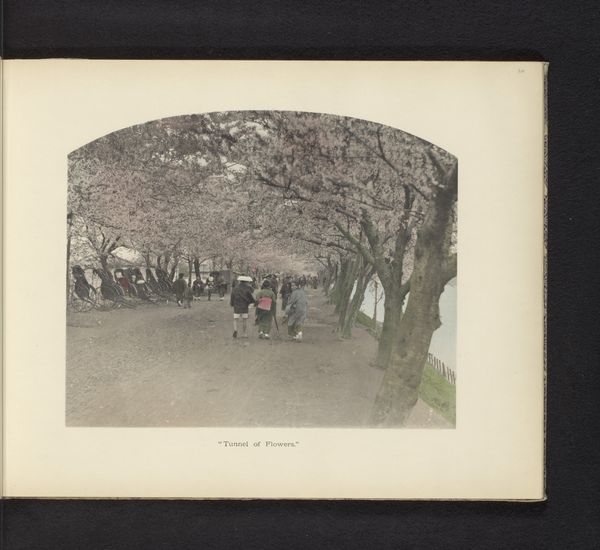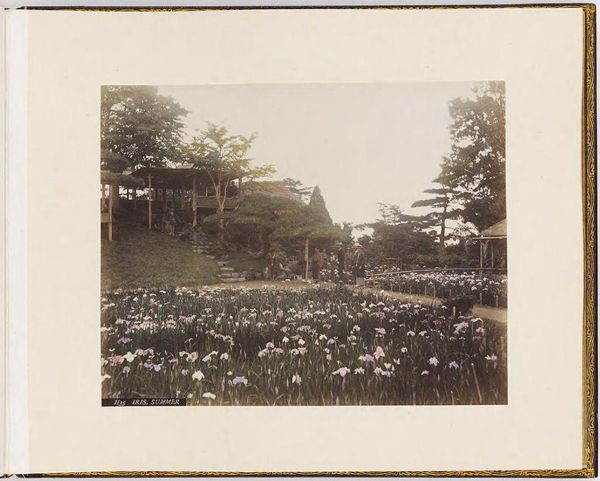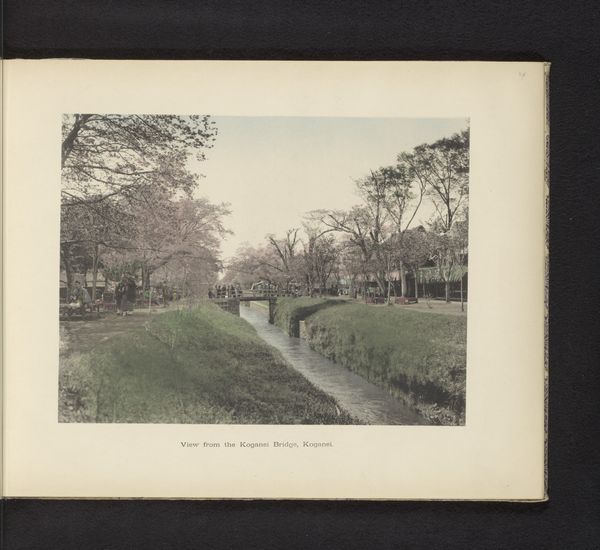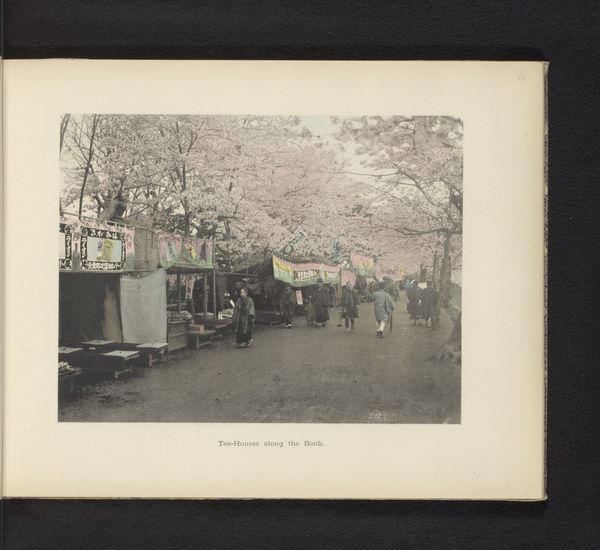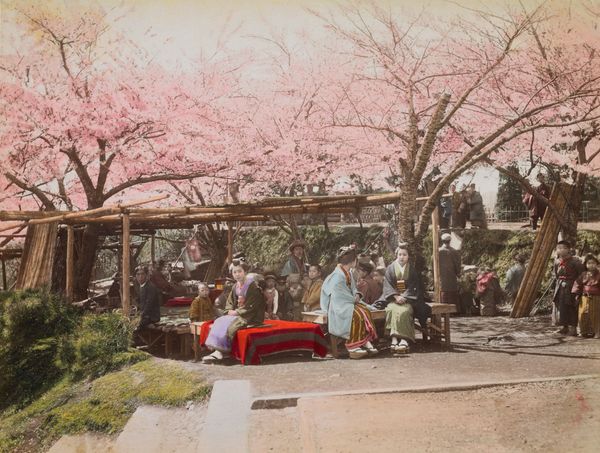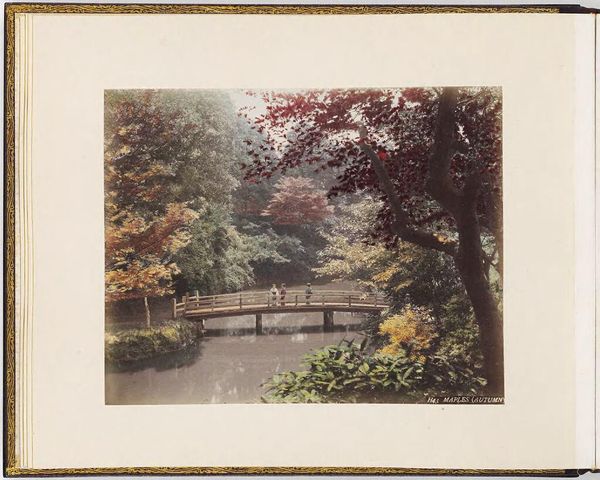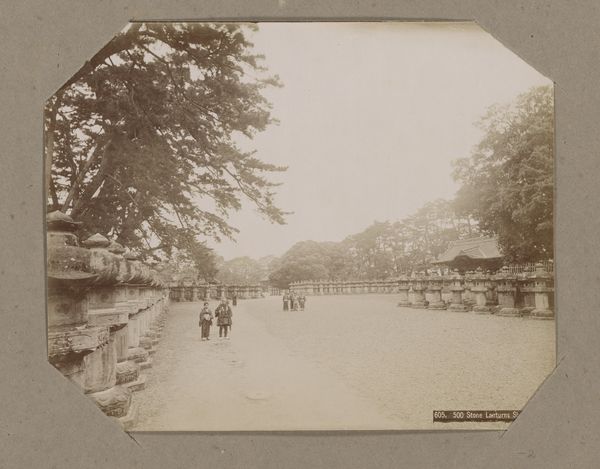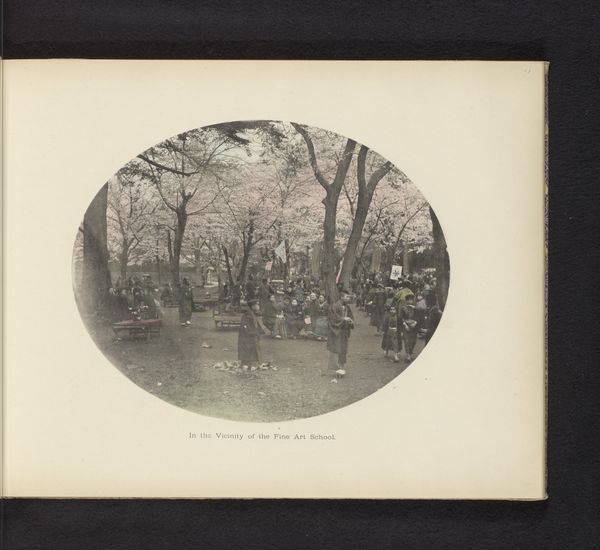
Mensen en kersenbloesem aan weerszijden van een beek in Koganei, Tokyo, Japan before 1903
0:00
0:00
albumen-print, photography
#
albumen-print
#
landscape
#
photography
#
watercolor
Dimensions: height 200 mm, width 261 mm
Copyright: Rijks Museum: Open Domain
Editor: So, here we have Kusakabe Kimbei's "Mensen en kersenbloesem aan weerszijden van een beek in Koganei, Tokyo, Japan," a photograph dating to before 1903. It's currently held in the Rijksmuseum. What strikes me is how seemingly picturesque it is, yet something feels staged about the figures, and the scene seems deliberately constructed for the Western gaze. How do you interpret this work? Curator: That's an excellent observation! Considering the historical context, it's vital to see this image as more than just a pretty landscape. Kimbei, like many photographers of the time, catered to the Western market's fascination with Japan. These images often reinforced pre-conceived notions and romanticized ideals of Japanese culture. What elements specifically give you that feeling of being "staged"? Editor: Well, the figures seem almost too perfectly placed amidst the cherry blossoms, and there's a stillness, a lack of genuine interaction. It feels posed, as if they're props in the scenery. Curator: Precisely. Think about the power dynamics at play. Japan was opening up to the West, eager to showcase its beauty while simultaneously navigating the pressures of colonization and trade. This photograph becomes a commodity, shaping Western perceptions of Japan and reinforcing orientalist tropes. The "cherry blossom viewing" isn't simply documented; it's carefully curated and sold as an exotic experience. Do you see how the museum context further frames this? Editor: That's fascinating. I hadn't considered the photograph itself as an active participant in that cultural exchange and, possibly, misrepresentation. Curator: Museums, especially in the West, played a role in constructing narratives about non-Western cultures. By displaying such images, they solidified these interpretations for a wider audience, sometimes perpetuating biased understandings. Understanding these historical undercurrents is crucial to unpacking images like these, so we see more than just "beauty." Editor: That adds a whole new layer of meaning for me. Thanks for that insight. Curator: My pleasure. It's about looking beyond the surface and understanding how socio-political forces shape both the creation and reception of art.
Comments
No comments
Be the first to comment and join the conversation on the ultimate creative platform.

